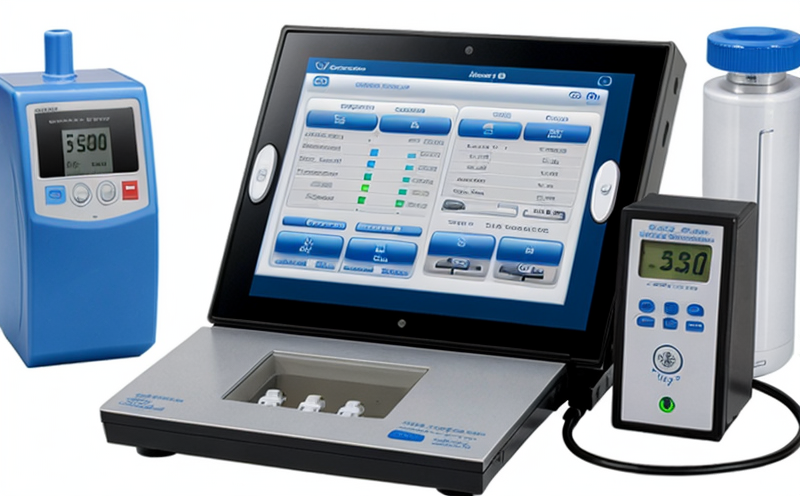ISO 80369-7 Connector Axial Separation Testing
The ISO 80369-7 standard is a critical guideline for manufacturers of medical devices, particularly those involved in the design and production of infusion pumps and drug delivery systems. This standard sets stringent requirements to ensure connectors used in these systems are robust enough to withstand the stresses encountered during use without compromising safety or efficacy.
The connector axial separation test specifically evaluates the mechanical integrity of the connector by simulating the force applied when a user disconnects a catheter from an infusion pump or other medical device. This test is particularly important as it helps identify potential design flaws that could lead to leakage, contamination, or even failure during use.
The testing apparatus used in this procedure typically includes a hydraulic press or mechanical fixture capable of applying controlled forces along the axis of the connector. The specimen, which represents the connector under test, is clamped into place and subjected to increasing axial force until separation occurs. The amount of force required for separation determines whether the connector meets the specified performance criteria outlined in ISO 80369-7.
For quality managers and compliance officers overseeing medical device development, this test ensures that their products meet regulatory standards before being brought to market. R&D engineers involved in the design phase can use the results of these tests to refine connector designs and improve overall system reliability. Additionally, procurement teams will benefit from understanding how such testing contributes to sourcing high-quality components.
Real-world applications include ensuring patient safety by preventing accidental disconnections that could lead to treatment interruptions or complications. In clinical settings, this translates into better outcomes for patients using infusion pumps and drug delivery systems. The test also helps manufacturers maintain compliance with international standards like ISO 80369-7, which is essential for regulatory approval.
Manufacturers who fail to meet these testing requirements risk recalls or product withdrawals due to non-compliance issues. By investing in robust connector design through rigorous axial separation tests, companies can avoid such pitfalls and build trust with healthcare providers and patients alike.
- Environmental Impact: Ensuring connectors are durable reduces waste associated with premature failures, thereby minimizing environmental impact.
- Sustainability: By enhancing product longevity, these tests contribute to more sustainable medical practices by reducing the frequency of replacements needed in healthcare settings.
Why It Matters
The ISO 80369-7 connector axial separation test is not just a formality; it plays a vital role in safeguarding patient health and enhancing medical device reliability. Failure to meet these stringent standards can have serious consequences, including increased risk of infection or treatment interruptions.
For healthcare providers, ensuring compliance with ISO 80369-7 helps maintain the integrity of their supply chain and fosters a culture of quality within their institutions. This ensures that patients receive optimal care without unnecessary delays caused by faulty equipment.
R&D engineers responsible for developing new infusion pump designs must consider these tests early in the process to incorporate necessary features that will withstand rigorous axial separation forces. Compliance officers play an equally crucial role, ensuring all devices comply with relevant regulations before they reach end-users.
Ultimately, adhering to ISO 80369-7 standards demonstrates a commitment to patient safety and regulatory compliance—a key factor in building long-term trust between medical device manufacturers and healthcare professionals.
Benefits
The benefits of conducting ISO 80369-7 connector axial separation tests extend beyond mere compliance with international standards. These tests provide valuable insights into the mechanical properties of connectors, allowing for continuous improvement in design and manufacturing processes.
Manufacturers that invest in thorough testing can anticipate reduced warranty claims and customer dissatisfaction, leading to increased market share and profitability. By demonstrating a commitment to quality through rigorous testing protocols, companies enhance their reputation among healthcare providers and patients alike.
The tests also contribute significantly to patient safety by reducing the likelihood of accidental disconnections or malfunctions that could result in serious health risks. This is particularly important for devices used in critical care environments where reliability is paramount.
From an environmental perspective, durable connectors translate into lower waste generation and resource consumption over their lifecycle, further supporting sustainable healthcare practices.





